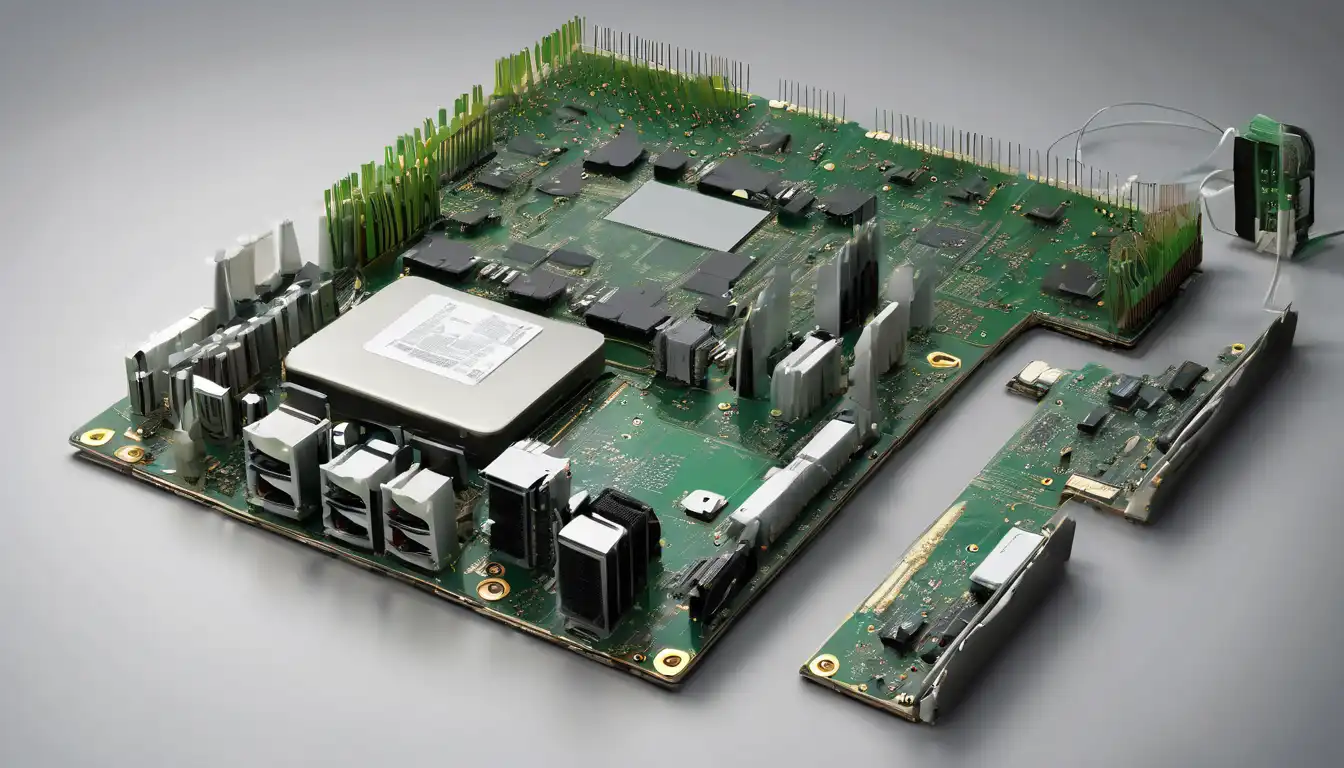The Rise of Sustainable Computing
As digital transformation accelerates globally, the environmental impact of computing hardware has become increasingly significant. Sustainable computing represents a paradigm shift toward eco-friendly hardware solutions that minimize energy consumption, reduce electronic waste, and promote circular economy principles. This comprehensive guide explores the innovative approaches and technologies driving the green computing revolution.
Energy-Efficient Processors and Components
Modern processors have made remarkable strides in energy efficiency. Companies like Intel and AMD have developed chips that deliver superior performance while consuming significantly less power. The latest generation processors incorporate advanced power management features, dynamic frequency scaling, and sophisticated sleep states that reduce energy consumption during idle periods. These innovations are crucial for both mobile devices and data centers, where energy efficiency translates directly to reduced carbon footprints and operational costs.
Beyond processors, other components are also embracing sustainability. Solid-state drives (SSDs) consume less power than traditional hard disk drives while offering faster performance. Low-power DDR memory modules and energy-efficient graphics cards further contribute to overall system efficiency. When selecting components for your next build, consider their power consumption ratings and look for Energy Star certification or similar eco-labels.
Sustainable Manufacturing Practices
The environmental impact of hardware begins long before it reaches consumers. Leading manufacturers are adopting greener production methods, including:
- Using recycled materials in component fabrication
- Implementing water conservation systems in manufacturing plants
- Reducing hazardous substances in production processes
- Optimizing supply chains to minimize transportation emissions
Companies like Dell and HP have established comprehensive sustainability programs that address the entire product lifecycle. These initiatives include using ocean-bound plastics in product enclosures, implementing closed-loop recycling systems, and designing for easier disassembly and repair.
Modular and Upgradeable Designs
One of the most effective strategies for reducing electronic waste is designing hardware that can be easily upgraded and repaired. Modular computers, such as Framework laptops, allow users to replace individual components rather than discarding entire devices. This approach extends product lifespans and significantly reduces e-waste.
Upgradeable designs also include standardized components that can be used across multiple device generations. For example, using the same type of RAM or storage interfaces makes it easier to repurpose components when upgrading systems. This philosophy aligns with the right to repair movement, which advocates for consumer access to repair information and replacement parts.
Renewable Energy Integration
Sustainable computing extends beyond the hardware itself to how it's powered. Data centers and computing facilities are increasingly transitioning to renewable energy sources. Major tech companies have committed to powering their operations with 100% renewable energy, investing in solar, wind, and other clean energy projects.
For individual users, choosing energy providers that offer renewable options or installing solar panels can make personal computing more sustainable. Power management software and smart power strips can further optimize energy usage by automatically putting devices to sleep when not in use.
Cooling and Thermal Management
Effective cooling is essential for hardware performance and longevity, but traditional cooling methods can be energy-intensive. Innovative cooling solutions are emerging that prioritize efficiency:
- Liquid cooling systems that use less energy than air conditioning
- Passive cooling designs that eliminate fan noise and power consumption
- Phase-change materials that absorb heat more efficiently
- AI-driven thermal management that optimizes cooling based on usage patterns
These advanced cooling technologies not only reduce energy consumption but also extend component lifespan by maintaining optimal operating temperatures.
End-of-Life Management and Recycling
Proper disposal and recycling of electronic equipment are critical components of sustainable computing. Responsible manufacturers offer take-back programs and recycling services for their products. When hardware reaches end-of-life, several options exist:
- Donating functional equipment to schools or non-profits
- Participating in manufacturer recycling programs
- Using certified e-waste recyclers that follow environmental standards
- Repurposing components for less demanding applications
Proper recycling recovers valuable materials like gold, silver, and copper while preventing hazardous substances from entering landfills. Many regions have established e-waste regulations that mandate responsible disposal practices.
Future Trends in Eco-Friendly Hardware
The future of sustainable computing looks promising with several emerging technologies:
Biodegradable electronics represent a revolutionary approach to reducing e-waste. Researchers are developing components made from organic materials that can safely decompose at end-of-life. While still in early stages, this technology could transform how we think about hardware sustainability.
Quantum computing, though energy-intensive in its current form, holds potential for solving complex environmental problems more efficiently than classical computers. As the technology matures, energy efficiency will likely improve significantly.
Edge computing reduces the need for data transmission to centralized clouds, potentially lowering overall energy consumption. By processing data closer to its source, edge devices can optimize energy usage while maintaining performance.
Implementing Sustainable Computing Practices
Adopting eco-friendly hardware solutions requires a holistic approach. Start by conducting an energy audit of your computing infrastructure to identify improvement opportunities. Consider the total cost of ownership, including energy consumption and potential resale value, when making purchasing decisions.
Regular maintenance, including cleaning components and updating software, can optimize efficiency and extend hardware lifespan. Implementing power management policies and educating users about energy-saving practices can further enhance sustainability efforts.
As technology continues to evolve, the commitment to sustainable computing must remain a priority. By choosing eco-friendly hardware solutions and adopting responsible usage practices, we can enjoy the benefits of technology while minimizing environmental impact. The journey toward truly sustainable computing requires collaboration among manufacturers, consumers, and policymakers, but the rewards—reduced carbon emissions, conserved resources, and a healthier planet—make the effort worthwhile.
